
Note: I am returning to Costa Rica in December 2018 for another amazing photo adventure. Join me there. Info.
I have been to Honduras seven times, and to Panama twice, but until this past October, I had never been to Costa Rica. No Central American traveler or photographer can afford to miss Costa Rica. Costa Rica offers rich and diverse bird and wildlife in a country with a well developed ecotourism structure, and an eco-friendly ethic that produces some of the finest observation and photography opportunities to be found in Central America. The lodges are well established and comfortable, the roads are, for the most part, good, there is a whole industry devoted to getting tourists around, the people are friendly, and at least the ones I met, are used to dealing with people who have come to enjoy the experience of wild Costa Rica. And Costa Ricans are proud of their country. They have more land devoted to National Parks and Reserves than most “developed” countries (over 25% of their country is within the National Park System), and their wildlife protection laws, mostly enacted a generation ago already, are a model for their neighbors. They take birds and wildlife, and those who come to see and photograph it, seriously.
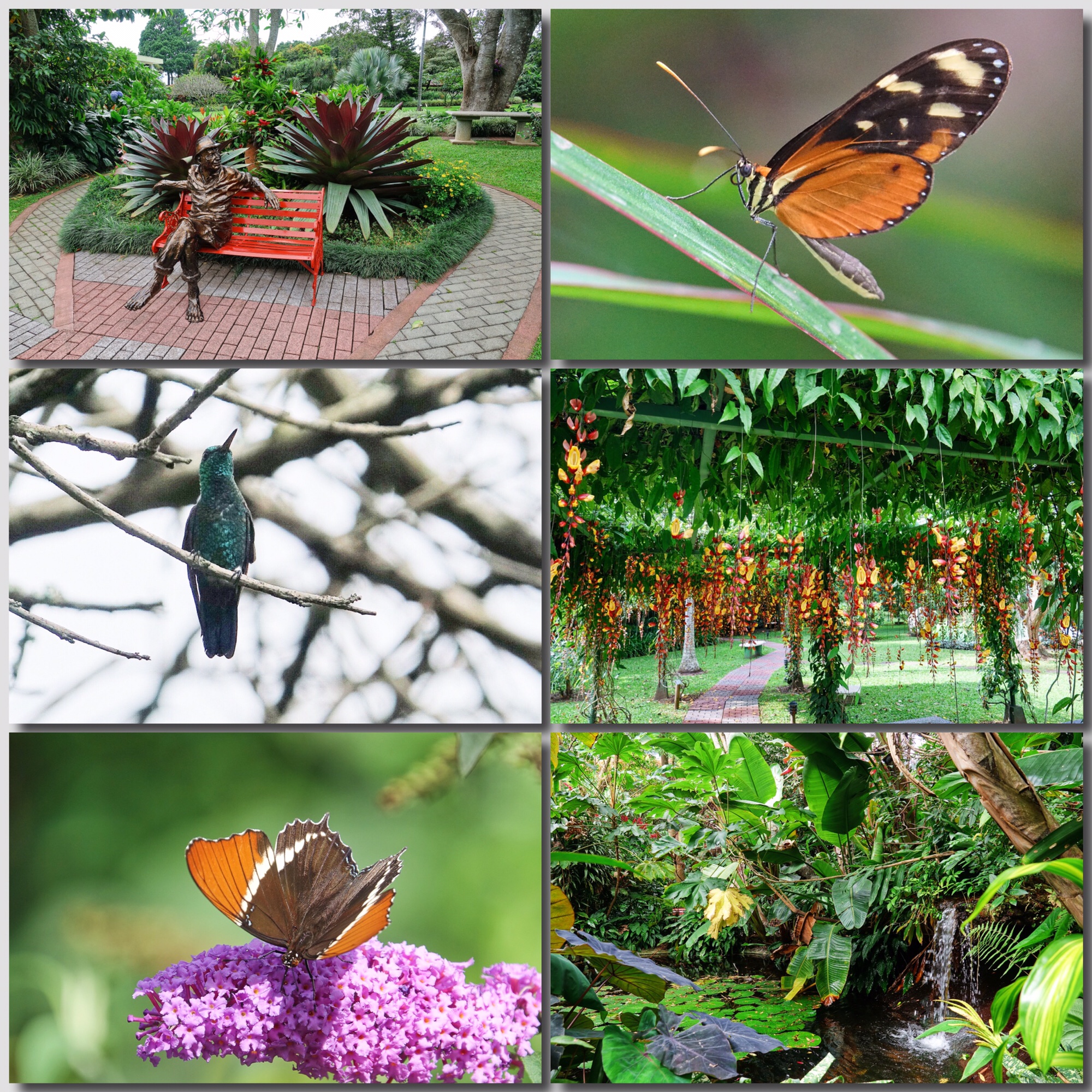
My trip to Costa Rica was arranged by Holbrook Travel (http://www.holbrooktravel.com/), and for most of my visit we stayed at Selva Verde, a rainforest lodge owned and operated by the Holbrook family. (http://www.selvaverde.com/ ) While the lodge itself offers great wildlife and birds, and many excellent photo opportunities, most days we went out to other well known birding and photography hot-spots in the valley of the Serapique River, and the surrounding foothills. The last three days I, and two other members of the group, went up into the mountains to the Savegre Hotel for an experience of the cloud forest and its birds (http://www.savegre.com/).
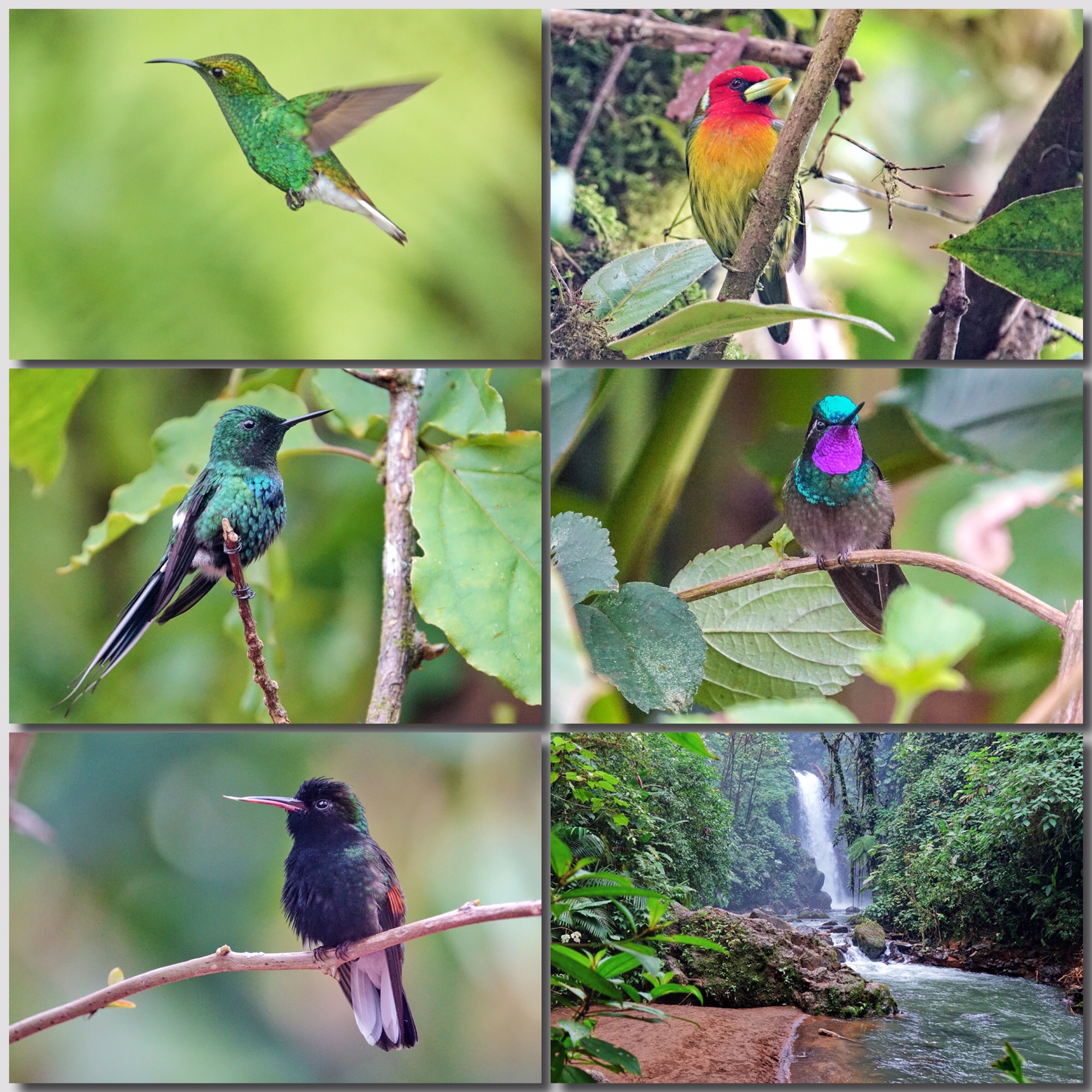
October is, perhaps, not the ideal month to visit Costa Rica. It is the rainiest month, and we had rain at least part of pretty much every day. In the mountains we had to detour around roads that were still closed due to mudslides from the recent tropical storm (a once in a generation phenomenon) and Sevegre had only reopened the day before we got there. The road in and out was still a bit sketchy, but we made it both ways. The rain did not discourage the wildlife or the birds, and we did not let it discourage us. Overall it was one of my most enjoyable tropical experiences. Still, next year’s Point and Shoot Nature Photographer tour of Costa Rica will be scheduled in early December, after the rainy season. 🙂
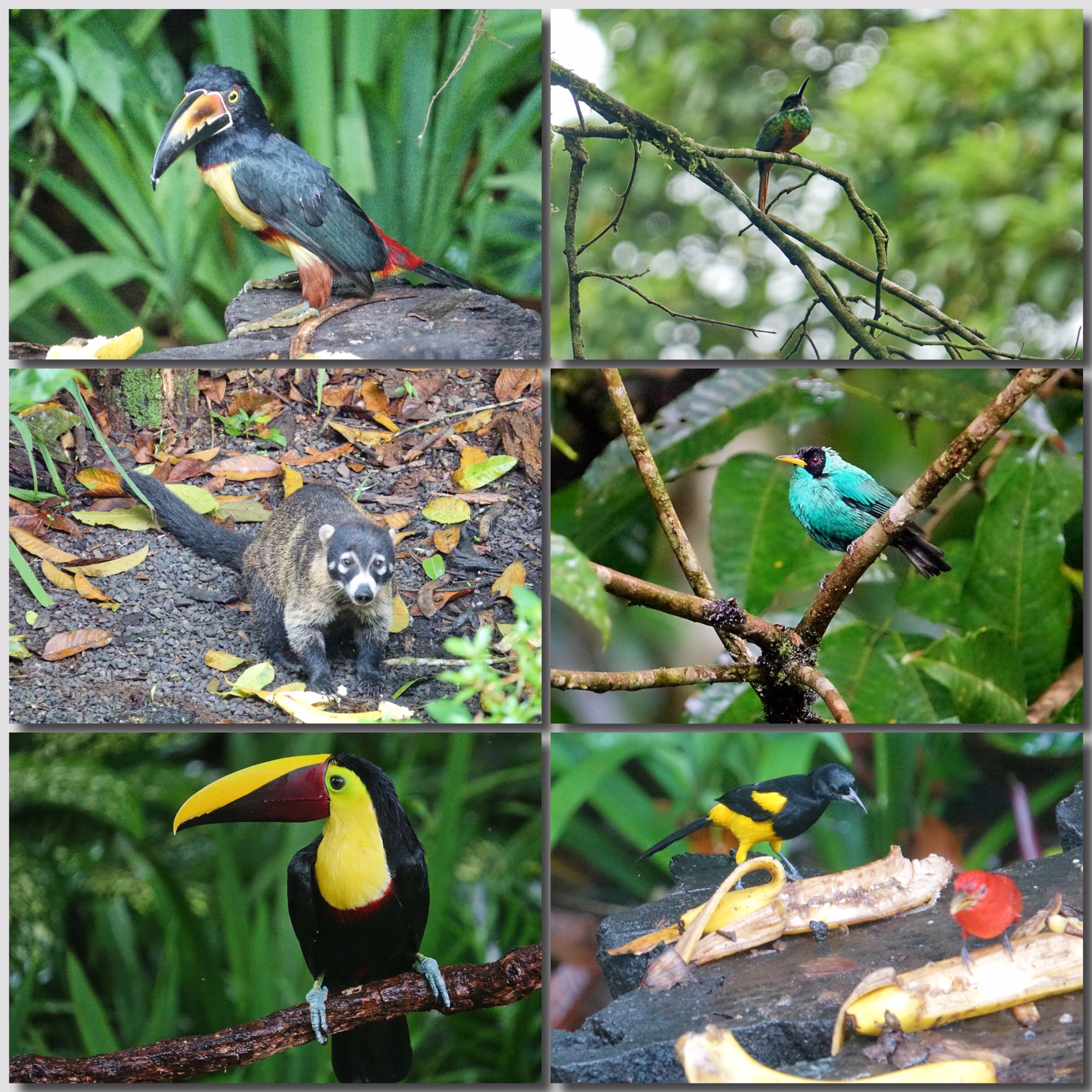
Around the feeders at Selva Verde: Collared Aracari, Rufous-tailed Jacamar, White-nosed Coati, Green Honeycreeper, Yellow-throated Toucan, Black-cowled Oriole and Summer Tanager.
One of the most attractive aspects of birding and photography in Costa Rica is the number and variety of birds that come to the feeders and frequent the grounds at the lodges and private reserves. Selva Verde had three kinds of Toucans, at least a dozen bright Tanager species, woodpeckers, Variegated Squirrels and a White-nosed Coati coming to the feeders. There were Howler Monkeys in the trees above the cabins every day, and White-faced Caputians across the street in the gardens. There were also Motmots in the Gardens.
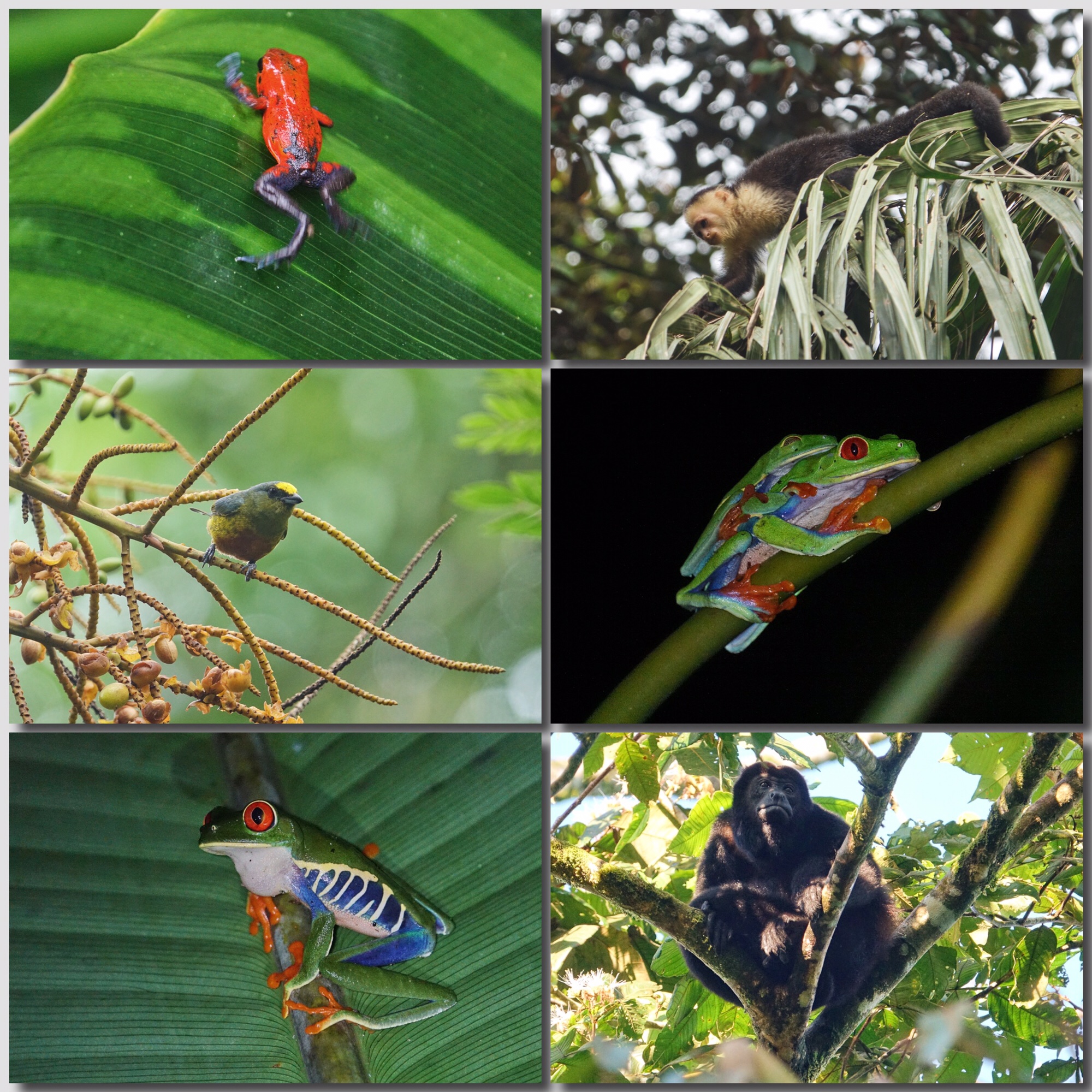
Out away from the feeders at Selva Verde: “Blue-jeans” Poison Dart Frog, White-faced Capuchin Monkey, Olive-backed Euphonia, Red-eyed Tree Frog, and another, from our night walk, Howler Monkey who woke me on our last day at Selva Verde
Before we even got to Selva Verde we visited the La Paz Waterfall Gardens on the mountain rim surrounding the high central valley and San Jose, where we saw a dozen different species of hummingbirds around the feeders and our first Barbets. Dave and Dave’s Costa Rican Nature Park, quite near Selva Verde lodge, has an array of carefully managed, natural looking, feeding stations that attracts Tanagers and Toucans, as well as a variety of rainforest hummingbirds. One afternoon we visited Cope, a native artist in La Union de Guápiles about 45 minutes from Selva Verde (http://copeartecr.com/) who not only showed us a Crested Owl in the rainforest, but took us back to his home, which he has transformed to something between a wildlife sanctuary and an outdoor photo studio, where he showed us all kinds of unique and interesting creatures, including a Glass Frog and the very rare White-tipped Sicklebill (hummingbird) which happens to come to his feeders.
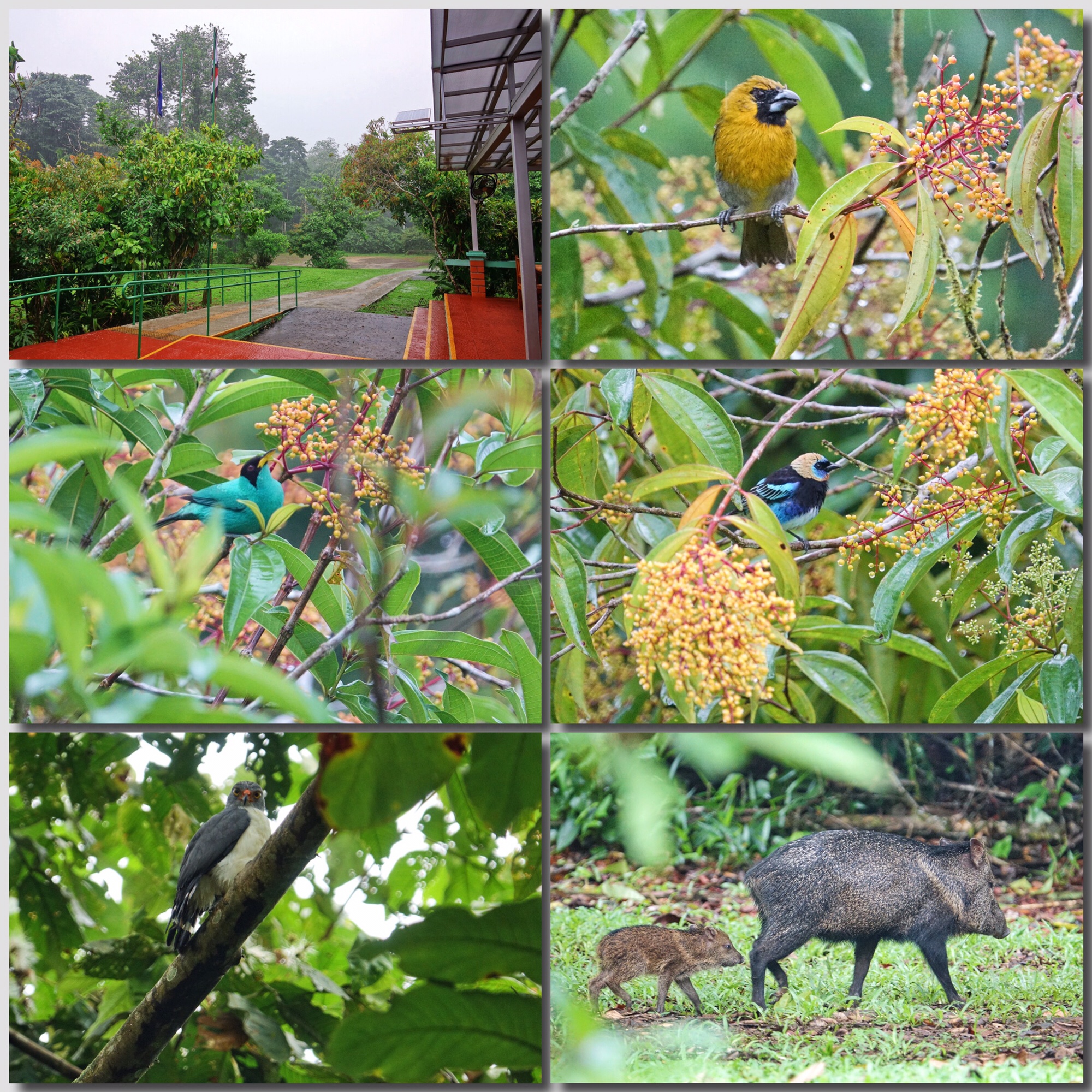
La Selva Biological Research Center is one of the most famous birding locations in Central America (or the world depending on who you talk to): Our day there was rainy and dark, but we still saw interesting birds right outside the restaurant patio. Black-faced Grossbeak, Green Honeycreeper, and Golden-headed Tanager. La Selva is one of the reserves that does not feed birds, but the native plants bring the birds in just the same. We later walked the paved forest trails and found this Semiplumbeous Hawk, and, near the research residences, a Collarded Peccary with young.
Some of the more “official,” publicly supported, reserves and research stations do not have bird feeders on principle…as they feel it keeps wildlife from the plants they would otherwise pollinate and may produce dependency on human resources. They rely on native plantings to bring the birds and wildlife in close. Dave and Dave’s or Cope’s are good examples, I think, of responsible feeding. At Dave and Dave’s they only put out banana slices (a low priority food for most birds) on natural vines hung around the photo patio, and backed by native flowering and fruiting plants. Their hummingbird feeders are kept to a 15 to 1 solution, with much less sugar than the natural nectars of the abundant native plants. The feeders bring the hummers in, but they spend most of their time, as I can attest, feeding on natural sources. Natural perches are provided and fresh Heliconia flowers daily where the hummers can drink. Dave and Dave are certainly very aware of their impact on the birds that they feed, and have made extraordinary efforts to restore native plants, fruits and flowers, on their property over the years they have owned it. In the process they provide some of the best photo opportunities for bird photographers to be found in the Serapique region. (http://sarapiquieco-observatory.com/welcome)
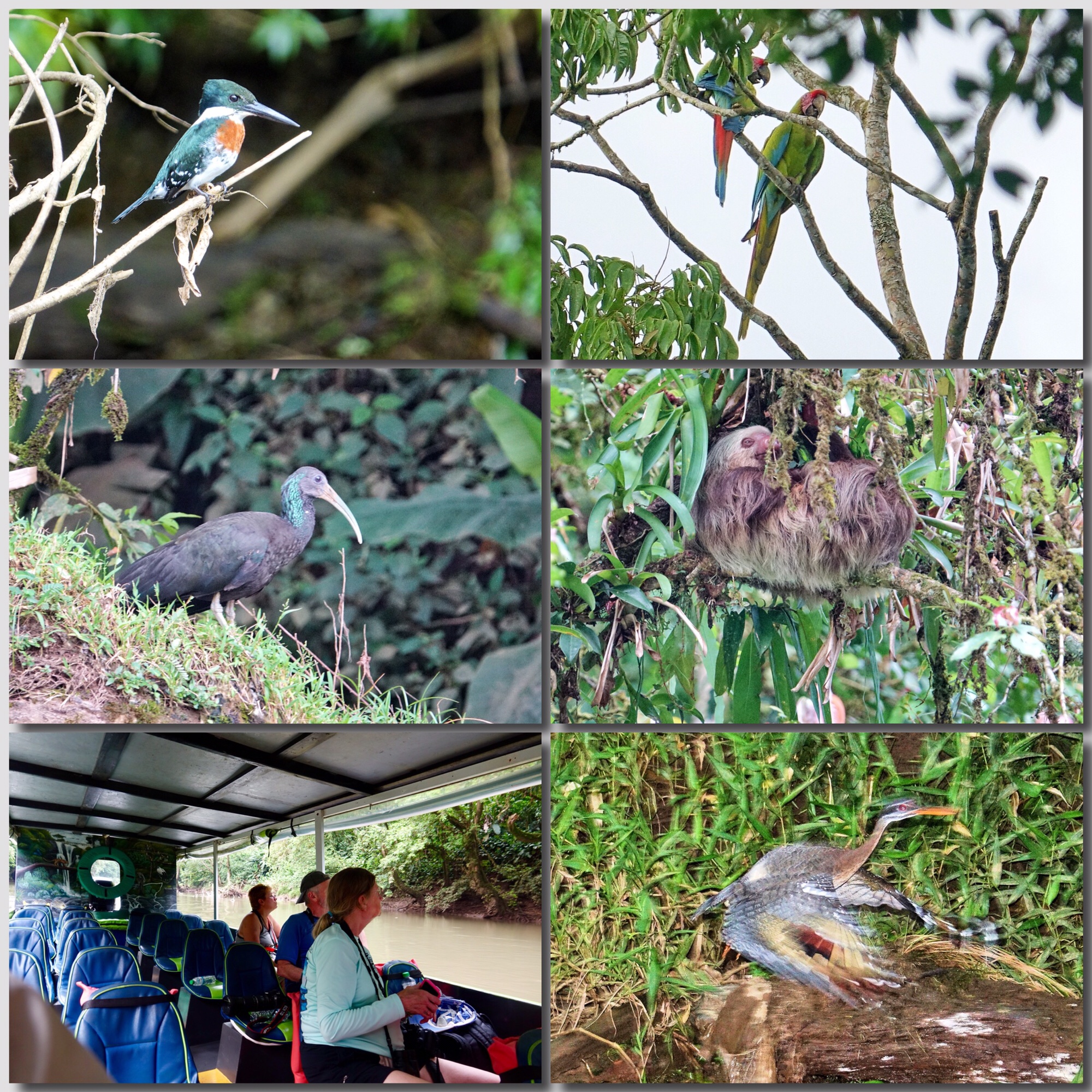
An afternoon on the Sarapique and Puerto Viejo Rivers: Amazon Kingfisher, Great Green Macaws (our closest and only perched views), Green Ibis, Sloth (with baby), well equipped and excellently captained tour boat, Sungrebe in flight (the highlight of the boat tour, seen as we were losing the light)
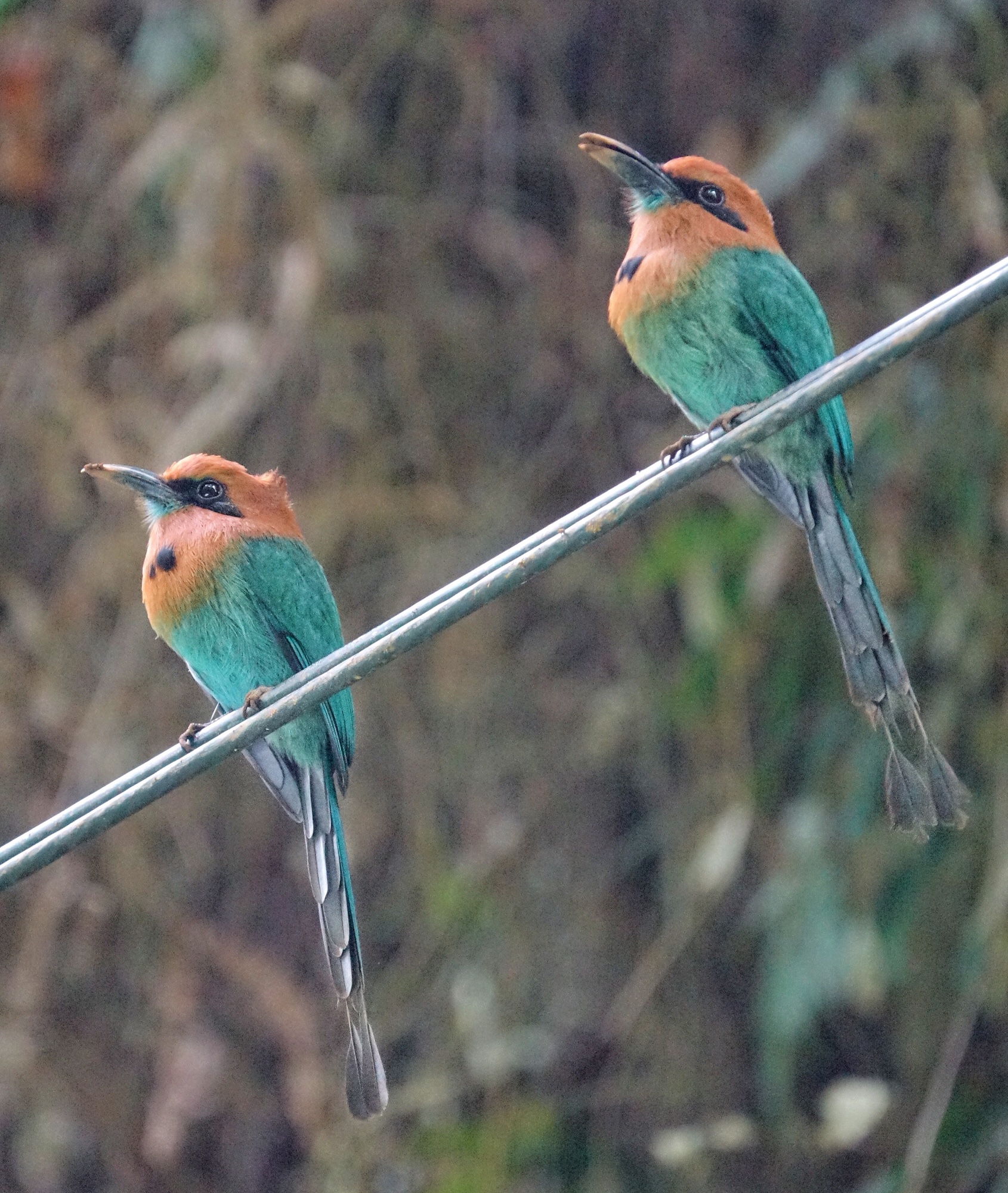
Broad-billed Motmots from the mid-level mountains near Socorro Costa Rica
Another factor that makes Costa Rica such a great ecotourism destination is the ease of access to such a wide variety of habitats. There are lodges, hotels, and reserves in every region, from dry forest in the north west, to the rainforest of the Caribbean lowlands, to the mid-level forest on the volcanic rims in the coffee country, to cloud forest at the higher elevations…all accessible by well maintained roads. And much of it is no more than 2-3 hours from San Jose’s international airport.
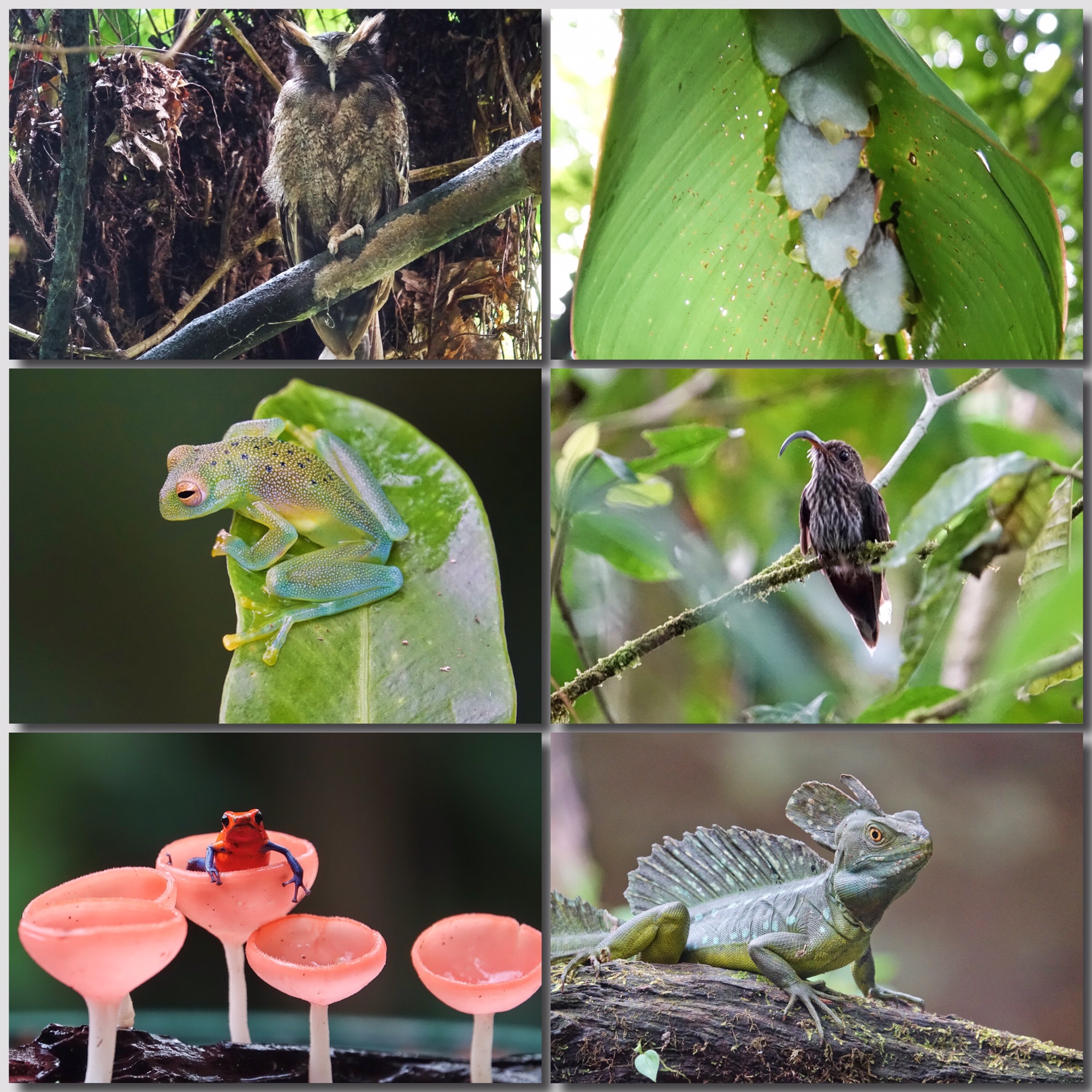
With Cope in the rainforest to find the Crested Owl and Honduran White Tent-making Bats, and then at his home for some exotic photography. He had collected the frogs the night before (Glass Frog and Poison Dart Frog) and set them up in his outside studio for natural looking shots. The White-tipped Sicklebill, one of the rarest hummingbirds in Costa Rica, comes to his feeders daily, and he has been photographing this big male Basilisk Lizard for over 10 years.
And everywhere you go, the people of Costa Rica are ready to show off their country and their wildlife. Near Savegre Hotel there is a tree up on a hillside that is famous for its Resplendent Quetzals. Right tree, right place. The farmer who owns the land has built a rough trail up the all but vertical slope, complete with hand-rails, and chopped out a platform on the hillside across from the tree where birders and photographers can stand to watch and photograph the Quetzals as they come in to feed. The day we visited, he met us at the foot of the trail and accompanied us up to the platform, as delighted as we were with the birds, though he sees them every day. He collects a small fee from birders and photographers who want to see “his” Quetzals, that helps his family to survive (hopefully more than survive) and gives him incentive to keep the land as natural as possible. He could easily rip out the wild avocado trees otherwise, and plant coffee or corn.
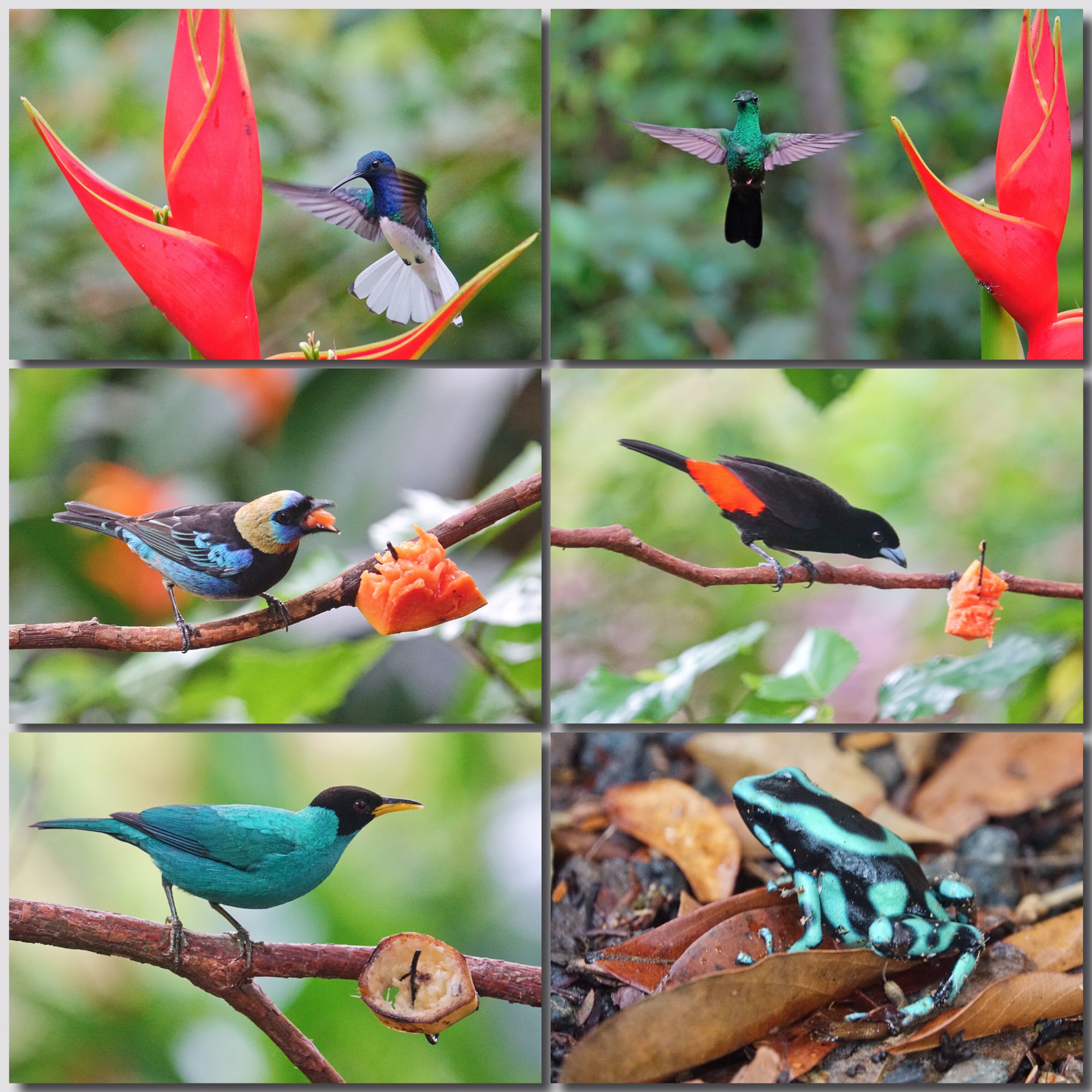
Dave and Dave’s Costa Rican Nature Park is a small private reserve with exceptional photo opportunities. White-necked Jacobin at Heliconia flower, Bronze-tailed Plumeleteer, Golden-headed Tanager, Passerini’s Tanager, Green Honeycreeper, Poison Dart Frog.
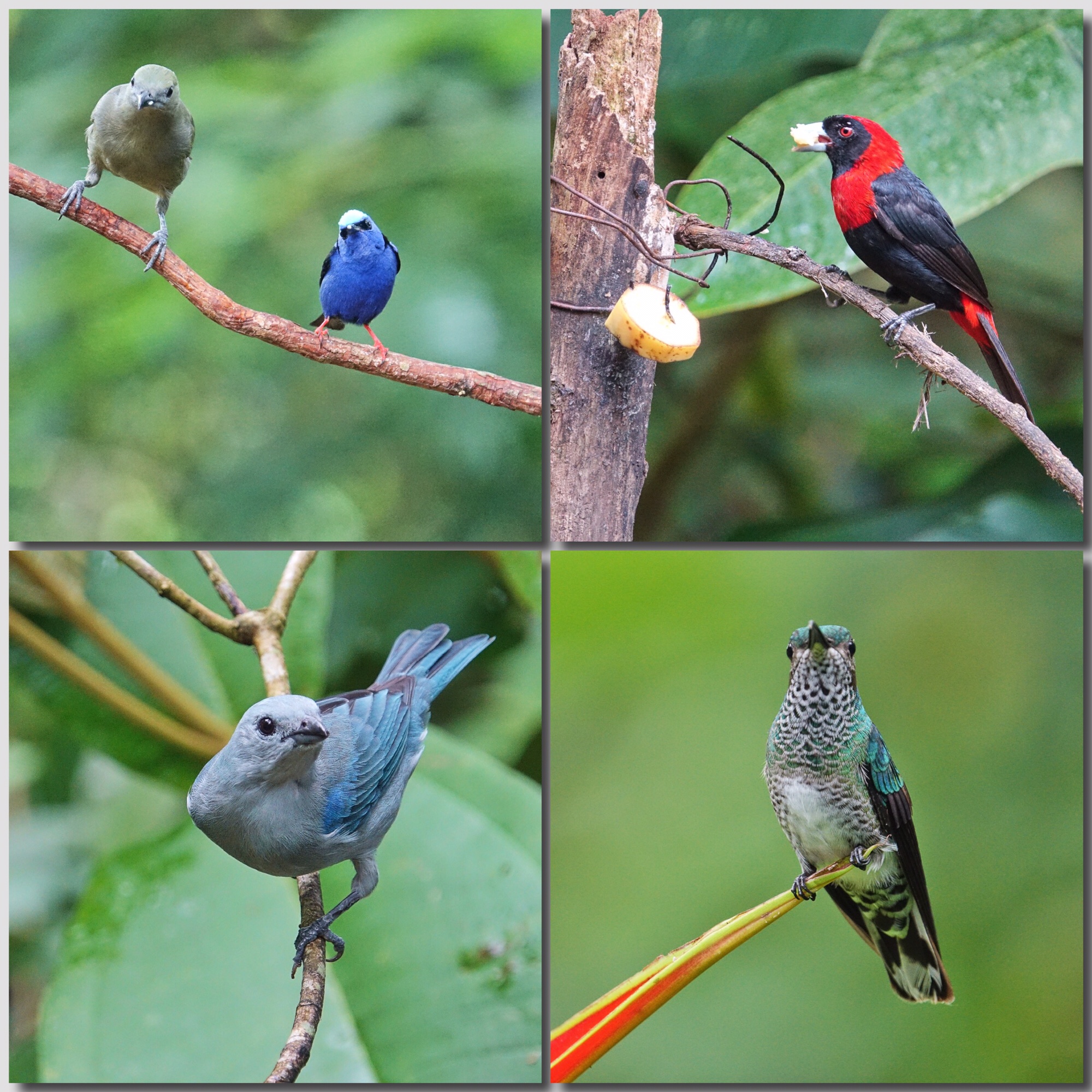
More from Dave and Dave’s. Shining Honeycreeper and Plain-colored Tanager, Crimson-collared Tanager, Blue-grey Tanager, Female White-necked Jacobin
All of the native guides and naturalists we met and worked with were well trained, knowledgeable, and delighted to be of help in our understanding of what we saw and experienced. Costa Rica does have an extensive and through guide training program that includes ornithology, biology, botany, geography, history, ecology, and first aid…and, of course, the interpreters at the official research stations are generally graduate-students or research assistants, experts in their fields. If you work with an experienced tour company like Holbrook, you can be confident that you will be in good hands while in Costa Rica.
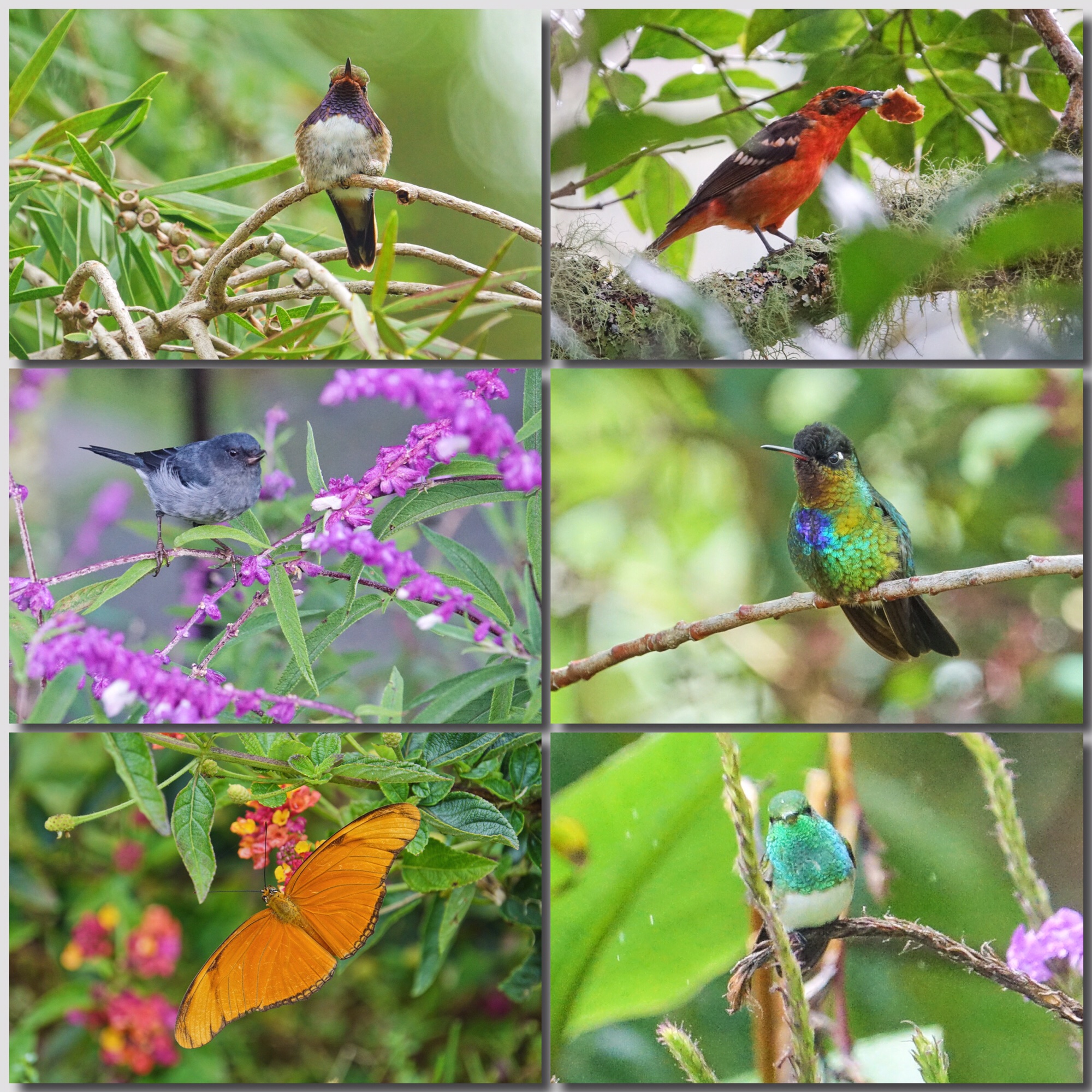
Cloud Forest and mountain specialties around the Savegre Hotel: Volcano Hummingbird (another Costa Rican endemic), Flame-colored Tanager, Slaty Flowerpiercer, Firey-throated Hummingbird, Julia Heliconian, Snow-bellied Hummingbird.
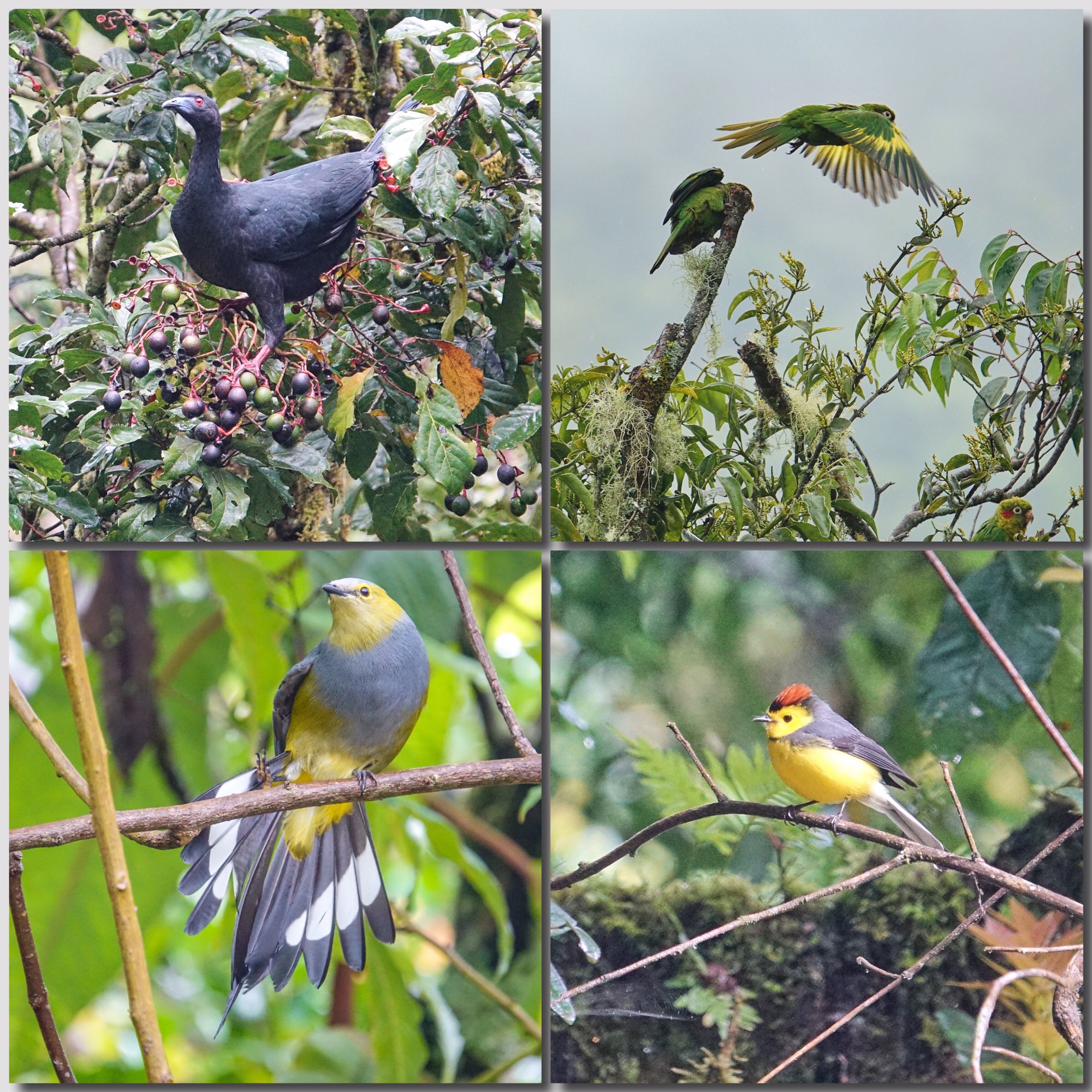
Black Guan, Sulpher-winged Parakeet, Long-tailed Silky Flycatcher, Collared Redstart
I was impressed enough with the potential (and the reality) of Costa Rica to plan to return with another group next year. I can not imagine any birder or photographer going there and not wanting to go back. A amazing country, amazing wildlife, an amazing experience, and amazing memories. That is what Costa Rica has to offer.
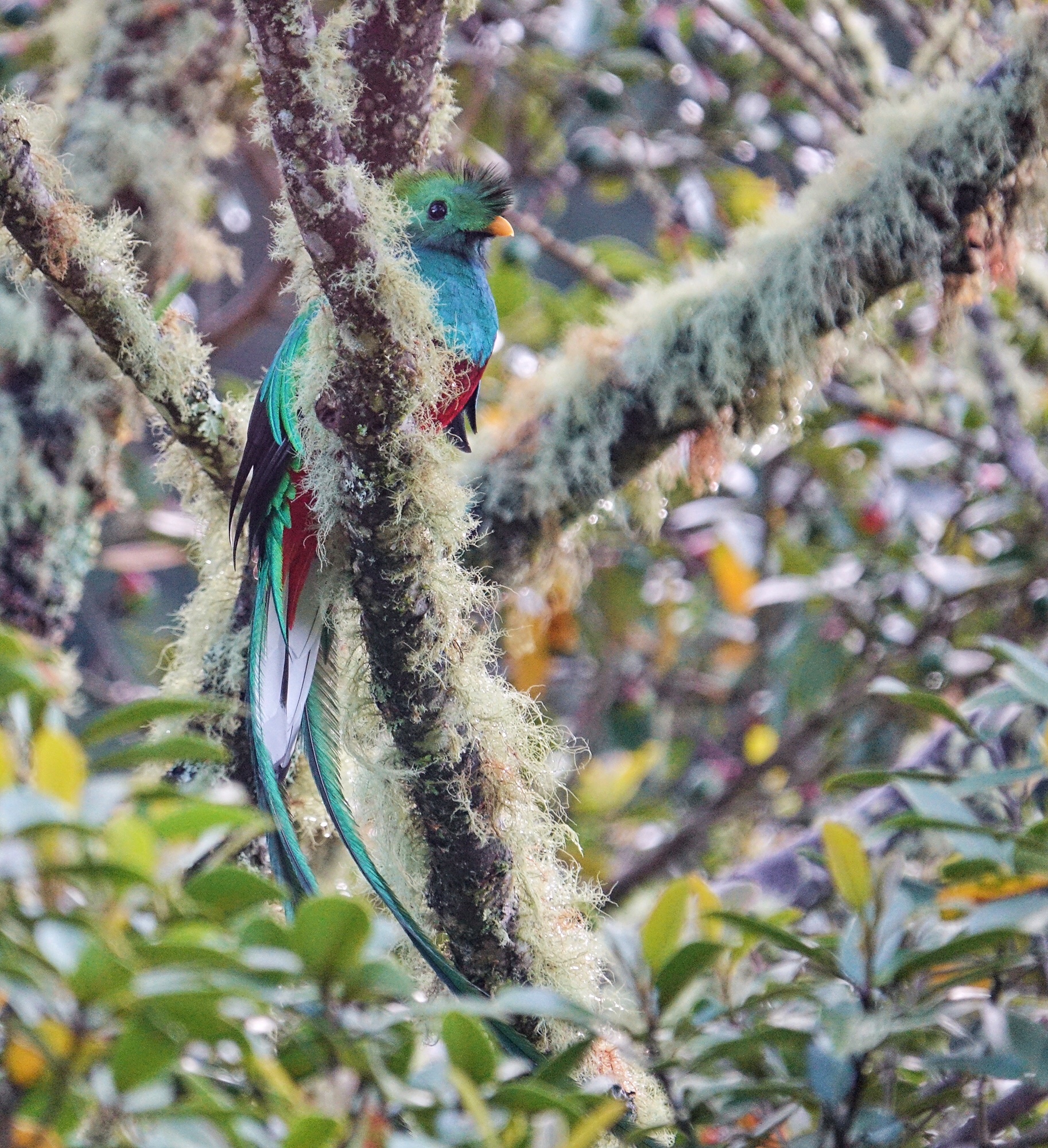
Resplendent Quetzal, near Savegre Hotel in the cloud forests of Costa Rica. Worth the trip all on its own.
All of the photographs in this article were taken with the Sony RX10iii and processed in Polarr on my iPad Pro.